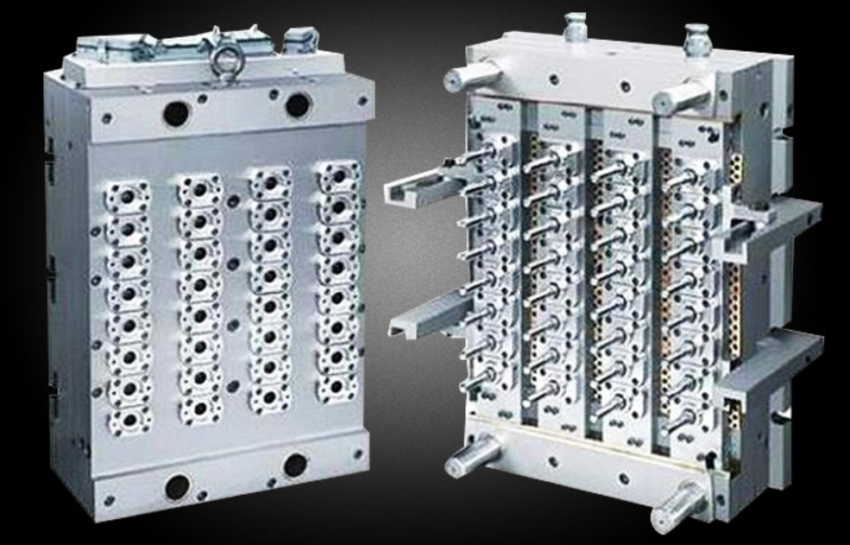New Trends and Challenges in the Injection Molding Machine Industry in 2024

With the continuous advancement of technology and the ever-changing market demands, the injection molding machine industry will face new development opportunities and challenges in 2024. Let’s look at the industry’s prospects in terms of technological innovation, environmental sustainability, intelligent manufacturing, and market expansion.
1、Technological Innovation: Combining Intelligence and Efficiency
Intelligence: With the development of artificial intelligence, big data, and cloud computing, the injection molding machine industry will gradually achieve intelligent production. By incorporating advanced sensors, controllers, and actuators, injection molding machines can realize automation, flexibility, and intelligent production. Additionally, injection molding machines will integrate with technologies such as industrial internet and the Internet of Things to enable functions like remote monitoring, fault diagnosis, and equipment maintenance.
Efficiency: To improve production efficiency and reduce costs, the injection molding machine industry will continuously optimize mold design, injection molding processes, and equipment structures. For example, the industry will adopt new hot runner systems, efficient hydraulic systems, and precise servo control systems to enhance the speed and accuracy of injection molding machines. Moreover, energy-saving motors and frequency converters will be used to reduce energy consumption.
2、Environmental Sustainability: Low-Carbon Focus
Energy conservation and emission reduction: The injection molding machine industry will actively respond to national policies on energy conservation and emission reduction by employing new energy-efficient materials and technologies to reduce energy consumption and emissions. For instance, low-energy servo motors and variable frequency drive technology will be adopted to minimize electricity consumption. Innovative cooling and lubrication systems will be implemented to reduce oil consumption. Efficient filtration and recycling techniques will be employed to minimize exhaust gases and wastewater discharge.
Circular economy: The injection molding machine industry will strengthen the recycling and reuse of waste plastics to promote a circular economy. By improving plastic recycling technologies and equipment, the industry aims to increase the recycling and reuse rates of waste plastics. Additionally, eco-friendly materials such as degradable plastics and bio-based plastics will be used to reduce plastic pollution.
3、Intelligent Manufacturing: Deep Integration of Digitization and Networking
Digitization: The injection molding machine industry will accelerate its digital transformation to achieve digitized management of production processes. By introducing advanced digital equipment and software, injection molding machines can collect, analyze, and optimize data. Furthermore, injection molding machines will closely integrate with product design, production planning, and other stages to realize end-to-end digital collaboration.
Networking: The injection molding machine industry will enhance collaboration with upstream and downstream enterprises to achieve networked coordination along the industrial chain. By establishing supply chain management systems, product lifecycle management systems, and other platforms, injection molding machines can be fully networked throughout the production, sales, and service processes. Additionally, injection molding machines will leverage technologies such as the Internet and mobile internet to enable online customization, remote monitoring, and other functionalities.
4、Market Expansion: Embracing Diversification and Internationalization
Diversification: The injection molding machine industry will actively explore emerging markets to meet the demands of various sectors. For example, injection molding machines will find broad applications in automotive, home appliances, medical, and construction industries, providing customized solutions. Additionally, the industry will develop new high-performance, high-value-added products to cater to the high-end market.
Internationalization: The injection molding machine industry will strengthen its competitiveness in the international market. By enhancing brand building, technological innovation, and market development, the industry aims to increase its international market share. Furthermore, active participation in international standardization and cooperation will be pursued to promote the internationalization of the industry.
5、Conclusion
The injection molding machine industry, as an essential part of the manufacturing sector, will have a profound impact on the entire manufacturing industry with its development trends and challenges. In 2024, the industry will face new opportunities and challenges in terms of technological innovation, environmental sustainability, intelligent manufacturing, and market expansion. Only by keeping up with the times, continuously innovating and developing, can the injection molding machine industry establish a strong position in the fierce market competition.
In the face of the challenge of technological innovation, injection molding machine enterprises should increase research and development investment, introduce advanced technologies and equipment, and enhance the technical content and added value of their products. At the same time, companies should strengthen cooperation with universities, research institutes, and other institutions to cultivate high-quality technical talents and provide talent assurance for technological innovation.
In response to the challenge of environmental sustainability, injection molding machine companies should actively respond to the national policy requirements for energy conservation and emission reduction. They can achieve this by adopting new energy-efficient materials and technologies to reduce energy consumption and emissions. Additionally, companies should strengthen the recycling and reuse of waste plastics, promote a circular economy, and reduce plastic pollution.
Faced with the challenge of intelligent manufacturing, injection molding machine companies should accelerate their digital transformation and achieve digitized management of production processes. They should also strengthen cooperation with upstream and downstream companies to achieve networked coordination along the industrial chain. Furthermore, companies should enhance brand building, technological innovation, and market development to improve the international competitiveness of their products.
In the face of the challenge of market expansion, injection molding machine companies should actively explore emerging markets to meet the needs of various industries. Additionally, they should strengthen their international market competitiveness and increase their market share. Companies should also actively participate in international standardization and cooperation to promote the international development of the industry.
In conclusion, the injection molding machine industry will face new development opportunities and challenges in 2024. Injection molding machine companies should seize these opportunities, respond to challenges, and continuously improve their core competitiveness to contribute to the sustainable development of the industry. Only by doing so can the injection molding machine industry establish a strong position in the fierce market competition and make greater contributions to the development of the manufacturing industry.


